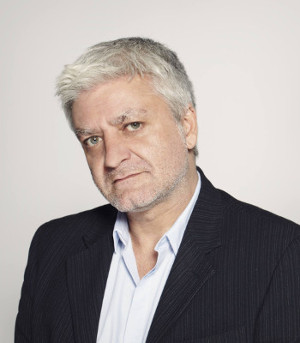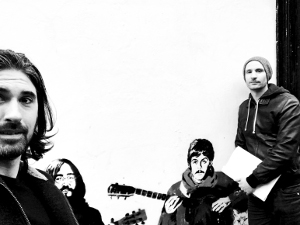
Excelsior! How Stan Lee Inspired Adland

Stan Lee died last week – but his creations will endure. The man behind Marvel Comics has left an indelible mark on pop culture.
As a writer, he makes for a great case study on punchy, engaging copy. In the early days, his jazzy interjections spiced up comic book writing with a swinging ‘60s breeziness. His penchant for naming his characters alliteratively – Peter Parker, Sue Storm, Bruce Banner – was an authorial signature devised to help him remember them and the side effect was that it helped lodge them into our collective consciousness. As a creator, he found a way to use bright, outlandish stories to explore serious social issues and regularly called out bigotry and racism in his ‘Stan’s Soapbox’ columns. As a collaborator, he worked with legendary artistic talents like Jack Kirby and Steve Ditko to develop a new visual vernacular.
His creations escaped the printed page into cartoons, TV shows, videogames and movies. The success of the Marvel Cinematic Universe is evidence of his enduring creative legacy and infinite ingenuity. Though Kevin Feige and co. were initially hamstrung by the fact that Stan’s most famous creations were off limits (the rights to The Fantastic Four and X-Men belong to 20th Century Fox and Spider-Man to Sony), even the (then) less mainstream heroes like Black Widow and Thor gave them plenty to work with.
Given his enormous cultural impact, it probably won’t surprise you to learn that Stan’s influence extends to the advertising world. For many, his comics were an entry point to creativity and writing and visual storytelling. We caught up with a few industry fans to find out how Stan Lee shaped them.
Nils Leonard
For Nils, co-founder of Uncommon Creative Studio, the most influential piece of Stan Lee work isn’t a comic but a book. So, if you’re stewing in envy over his vibrant Habito ads, ethical coffee pod brand Halo or the success of the recent Asos project Collusion – blame How to Draw Comics the Marvel Way. The drawing manual, written in Stan’s distinctively hip ‘60s lingo, was Nils’ entry point into art and creativity (it’s a pop classic that completely democratises drawing – just buy it!) – and there was no turning back for Nils. Comics stayed with him – once he even commissioned comics artist Simon Bisley to draw a wild Captain Birdseye concept.
I knew I wanted to be into art and drawing and my grandma, bless her, bought me a book called ‘How to Sketch’ and I remember these two books. How to Sketch was five times as wide and had this pencil drawing of a renaissance woman on the front – and I should have liked it because she had her boobs out but it was just awful, I couldn’t get into it. And my dad bought me How to Draw Comics the Marvel Way.
And that was the seminal difference. You could eat that book it was so good. I drew every day. It’s my earliest example of something immersive that was also really easy. And I learned loads.
That book’s fucking amazing. He breaks it down – here’s four squares… and suddenly here’s a baddie. I’ve always loved comics, the way you can architect a page using frames. And it’s really rare to have a book rendered in pencil. The irony with the other book that I contrast it with is that there was more copy than drawings. All I remember [with the Marvel book] were drawings and drawings of weapons and baddies and built-up heads, whereas this other book must have had six pages of full text for every image.

I can remember that smell; that’s how you know it’s had an impact. I would eulogise that book all day. As a mark of anything, I bought it for my kids – and the heroes they’re into are different by the way. They like the Marvel films, but in terms of animation they’re into We Bare Bears and the Cartoon Network stuff but the same principles apply.
The only other the truth that I had underestimated is this: a bit like the way advertising is the slutty gateway drug for art, I think that comics are the gateway drug for creativity. And I think it’s really easy to underestimate these things. I didn’t understand art; I thought it was out of reach. I thought this job was out of reach. My family had never been to uni. That’s what this book did – it said, ‘nah, this stuff is super simple, anyone should do it.’ It’s all code for story and for myth and for heroes. I thought, fuck, that’s seminal.
Stéphane Xiberras
“If you’re doing something about Stan Lee… you have to talk to Stéphane.” The president and chief creative officer of BETC, it turns out, has a deeply-rooted love of comics and Stan Lee looms large for him as an inspiration.
When I was a young student and wanted to get into advertising, my dream was to become a mix of Stan Lee and Bono. Don’t laugh! Or OK… do, you miserable sod.
Ever since I was a little kid I’ve been absolutely nuts about Stan Lee. I loved the idea of the double lives, these guys who from time to time wore a cape and turned into epic heroes but who most of the time were completely normal blokes with shit lives and suits.
I also feel like the old ’with great powers comes great responsibility’ should be applied more by everyone in our industry, given all the crap we force-feed people with every day.
Tahaab Rais
If we were gathering together an adland superhero team, Tahaab, Regional Head of Strategy, Effectiveness and Intelligence at FP7/McCann MENA, might just be the brains of the operation. Ever the strategist, he’ll quite happily go into great depth about the insight that can be gleaned from comics culture and has given the matter a lot of thought (seriously it’s worth a listen). Stan Lee has been a lifelong inspiration – Tahaab sent us photographic evidence and we reckon he made a pretty adorable Deadpool.
That I am a fan of superheroes is no secret. Along with Superman, Spider-Man was one of my favourite superheroes growing up. Despite all his cool powers, he embodied humanity, humility, heroism and generosity. He did things for others that he didn’t even get credit for. He sacrificed a lot for others. He showed how your responsibilities come first, before you. He bore those many responsibilities, from a very young age, with a maturity far beyond his years. He loved his uncle, his aunt and the special ‘someones’ in his life, and he loved them unconditionally. I have learnt a lot from Spider-Man. And Stan Lee gave me Spider-Man.

Stan Lee also gave me Deadpool. And the Deadpool films taught about me about how there’s a lot that I could learn from superhero movies about creativity, about content creation and about marketing content, disruptively and effectively. It made me look at the brands that I work on through a completely new lens. And create as well as shape stories, across media, that are more entertaining and more exciting for people in the real world.
So, thank you Stan Lee for creating characters that shaped me and my outlook on our world. And for doing that for kids all over the world. THAT is your legacy.
Thomas Derouault
These days Thomas is managing director and ECD at J. Walter Thompson Paris but his origin story is a little bit surprising. Before finding advertising, Thomas was an aspiring comics artist, even moving to New York to train – though when American editors decided to boycott French artists, his career took a different turn…
When I was growing up, the Fantastic Four and Spider-Man cartoons were my favourite TV programs. Little did I know that they lived many more adventures in the pages of the Marvel comics. One day, my grandmother took me to the newsstand and I found out that comics existed. That’s how I met Stan Lee.
Now that Stan has sadly passed, I look back at the influence he had, and I can only acknowledge that Spider-Man taught me responsibility, the X-Men, tolerance, and the Avengers, duty. He told stories about bigger than life heroes that went much further than extraordinary adventures because they also delivered strong social messages. He made me want to become a cartoonist which led me to art school and to advertising.
Sure, he didn’t create all this on his own, it would be unfair to dismiss the huge contributions of his artists such as Jack Kirby, Steve Ditko, John Romita and many more, but he certainly brought that voice, that tone, that benevolent look on social issues penning stories about racism, drug abuse and the implications of power that changed or helped shape the views of many. He gave these stories, these characters their soul.
Having met him in person, I can attest that he was just as formidable in real life than he was in his columns and comics. The world is far less super without him in it.
Matt Fitch and Chris Baker
By day, Matt is a mild-mannered creative director at adam&eveDDB and Chris Baker a, err, mild-mannered (they’re always mild-mannered these alter-egos) production consultant. But by night they’re a comics writing team, who most recently have published Apollo, a graphic novel that unpicks the myths of the moon landing.
It’s very hard to talk about working in comics without mentioning Stan ‘the Man’ Lee. In a sense, Stan was the pusher of a gateway drug that leads to harder stuff. Ask around and everyone has that story, the one where they picked up their first comic, maybe on some holiday in an airport or in a grimy newsagents that had this imported American stuff.
Our generation wasn't as fortunate as today's (they said sounding old) - comics were on the periphery of culture - but there were still a few recognisable titles we all gravitated to. Spider-Man was one of Stan Lee's greatest achievements. He wrote a relatable outsider kid that suddenly gains incredible power, more importantly, he struggles with that and it’s compelling even to readers today.
Stan the Man implanted important messages into fantastic settings and it changed comic books. As writers we too try and enhance the human aspects of fantastic tales. It’s as important to us as it was to Stan. It’s very hard to even think that he is gone, but there is so much of him out there in the DNA of our culture. The power of comics is Magick. EXCELSIOR!


















